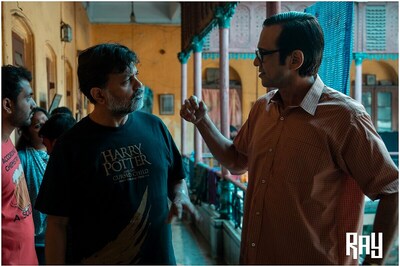
views
In recent years, historians have challenged the traditional understanding of the American Revolutionary War. While most people believe that the war was fought exclusively in the 13 colonies against the British, some historians argue that it should be viewed as a world war with broader implications.
According to Kathleen DuVal, a history professor at the University of North Carolina, the focus on the Revolutionary War has historically been on Massachusetts and Virginia, neglecting the global context. However, in the past decade or so, historians have expanded their research to include the war’s worldwide impact, as per CNN.
One significant aspect is the involvement of Britain and France as key players in the conflict. While France’s assistance to the American colonists is well-known, the French king’s decision to enter the war was driven more by opposition to Britain than support for the Americans. France, along with Spain and the Netherlands, formed an alliance against Britain, turning the conflict into a global struggle, according to the report.
The final battle of the Revolutionary War, as argued by DuVal and others, took place in Cuddalore, India, in June 1783. This battle involved British and French forces and marked the culmination of the war. The involvement of various nations and their motivations demonstrate how the American struggle for independence served as a means to weaken Britain on multiple fronts.
‘Not an Isolated War’
The Revolutionary War between Britain and the American colonies was not an isolated conflict but had roots in a larger global context. The Seven Years’ War, also known as the French and Indian War in North America, played a significant role in shaping the tensions that led to the Revolutionary War.
The Seven Years’ War took place between 1754 or 1756, depending on different perspectives. During this conflict, Britain achieved victories over France and its ally Spain in various parts of the world, including the Indo-Pacific, Portugal, and Canada. However, the war was costly for Britain, leading to significant financial burdens.
To recoup these expenses, the British government attempted to impose taxes on the American colonists, which fueled resentment and resistance. The colonists saw these taxation measures as an infringement on their rights and a sign of increasing British control over the colonies. The growing discontent eventually led to the Revolutionary War, as per CNN.
Historians such as Kathleen DuVal, along with the U.S. State Department’s Office of the Historian, acknowledge the connection between the Seven Years’ War and the Revolutionary War. The costly nature of the conflict and the subsequent attempts to impose taxes on the colonists contributed to the buildup of tensions that ultimately erupted into the fight for American independence.
Yorktown not the Town
For many years, it has been widely taught that the final battle of the American Revolutionary War took place at Yorktown, Virginia, from September 28 to October 19, 1781. However, historian Don Glickstein argues that labeling Yorktown as an “American” victory is somewhat generous, as per CNN.
According to Glickstein, Yorktown was actually a French victory, made possible by a French strategy and significant French involvement. The French played a crucial role in the battle, providing fleets, siege engineers, artillery, soldiers, marines, and sailors who outnumbered their American rebel allies by four to one. The National Park Service notes that around 600 French troops were killed at Yorktown and in associated naval battles, while just over 100 Americans lost their lives.
The Battle of Yorktown was not solely an American triumph but rather a victory achieved through the cooperation of allies. The Spanish and the Dutch Republic supported the colonists financially and logistically, as stated by the National Museum of American History. Historian David Allison emphasizes the vital role played by foreign assistance, stating that without allies, the colonies would not have gained their freedom.
Although the defeat at Yorktown prompted Britain to seek a resolution, the fighting between Britain, France, and Spain continued in other parts of the world, such as Jamaica, Gibraltar, and India. Glickstein highlights the significance of India to Britain, with its abundant resources including silk, cotton, textiles, spices, tea, opium, and precious stones. Controlling India was a highly desirable objective for the British, as it offered access to valuable trade routes in the Asia-Pacific region.
Even before the American Revolution, the report says, Britain and France had established colonies in India and had brought their conflicts from Europe to the subcontinent. When France entered the war as an American ally in 1778, the British East India Company swiftly attacked France’s Indian colonies, drawing both countries’ Indian allies into the conflict, as explained by the Museum of the American Revolution.
‘Final Battle in Cuddalore’
The garrison at Cuddalore, located on the Bay of Bengal, held significant importance for Britain in late June of 1783. The conflict involved both land and sea battles. The naval battle of Cuddalore on June 20 resulted in a victory for the French. On land, the besieged French forces attempted to attack the surrounding British troops on June 25 but were ultimately repelled, according to the report.
Meanwhile, at sea, the French admiral planned to launch a bombardment of the British land forces to support the French ground operation. However, before the bombardment could commence, a British ship appeared on the horizon flying a white flag. It brought news that six months earlier in Paris, the Treaty of Paris had been signed, effectively ending the American Revolution. This meant that Cuddalore, India, marked the final battle of the American Revolutionary War.
Therefore, according to Don Glickstein and historical accounts, the battle at Cuddalore, India, holds the distinction of being the last engagement of the American Revolution.



















Comments
0 comment